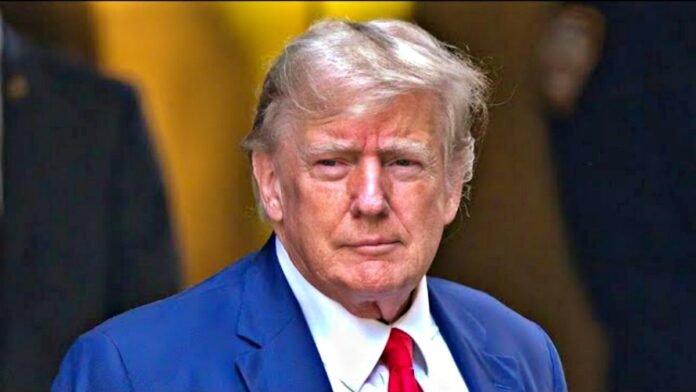
Key Points:
- US government officially shut down at 12:01 AM EDT on October 1, 2025, after Senate failed to pass temporary funding bills from both parties
- Republican funding proposal extending through November 21 received only 55 votes, falling short of 60-vote threshold needed to overcome Democratic filibuster
- Democratic alternative proposing funding through October with $1 trillion healthcare spending increase defeated 53-47
- Approximately 750,000 federal employees furloughed daily; essential workers including military, FBI, CIA continue work without pay
- Trump threatens “vast numbers” of permanent layoffs and program eliminations during shutdown; two federal employee unions filed lawsuit September 30
- Democrats demand extension of Affordable Care Act subsidies and reversal of Medicaid cuts from Trump’s July “One Big Beautiful Bill”
- This marks fifth major shutdown in 20 years and first since 35-day shutdown in 2018-2019 during Trump’s first term
- Congressional Budget Office estimates $400 million in daily unpaid wages; shutdown could cost economy billions if prolonged
Washington D.C.: The United States government officially entered a shutdown at 12:01 AM EDT on Wednesday, October 1, 2025, marking the beginning of the new fiscal year with hundreds of thousands of federal employees furloughed and critical government services suspended. The shutdown commenced after both Republican and Democratic funding proposals failed to secure passage in the Senate during contentious late-night votes on September 30.
The Republican proposal, designed to extend government funding at current levels through November 21, garnered only 55 votes falling five votes short of the 60-vote supermajority required to overcome a Democratic filibuster. The Democratic alternative, which would have continued funding through the end of October while adding over $1 trillion in healthcare spending, was similarly defeated with a 53-47 vote.
Following the failed votes, Russell T. Vought, Director of the White House Office of Management and Budget, issued a memo instructing federal agencies to prepare for an “orderly shutdown”. Senate Majority Leader John Thune of South Dakota characterized the impasse as Democrats’ choice: “The far-left base and far-left senators demanded a showdown with the president. The leaders of the Democratic Party have acquiesced to these demands, and now the American people must bear the consequences”.
Healthcare at Center of Partisan Battle
The fundamental disagreement driving the shutdown centers on healthcare policy, specifically Democratic demands to extend enhanced Affordable Care Act (Obamacare) tax credits and reverse Medicaid cuts implemented in President Trump’s July legislative package known as the “One Big Beautiful Bill”. Democrats have framed the shutdown as a fight to prevent dramatic increases in health insurance premiums for millions of Americans.
Senate Minority Leader Chuck Schumer of New York made the Democratic position explicit during floor speeches leading up to the midnight deadline: “If the president were wise, he would do everything possible to resolve this health care crisis immediately, as Americans will hold him accountable when their health insurance costs increase by $400, $500, or $600 a month”. Schumer emphasized that Democrats would not back down: “We have less than a day. If there were ever a time for Donald Trump and the Republicans to take health care seriously, it is now”.
Democrats are specifically demanding the continuation of tax credits that help make health insurance affordable for millions of Americans, reversal of Medicaid cuts affecting low-income families, and restoration of funding to the Centers for Disease Control and Prevention (CDC) and National Institutes of Health (NIH). The enhanced ACA subsidies are currently set to expire at year’s end, and Democrats view preventing premium increases as politically popular ground on which to make a stand.
Republicans have categorically rejected these demands, arguing that Democrats are holding government funding hostage to advance partisan healthcare objectives. The Trump administration has shown no willingness to compromise, apparently calculating that Democrats will bear the majority of public blame as the party making demands to keep government operational.
Trump Threatens Mass Layoffs and Program Eliminations
In a dramatic escalation just hours before the shutdown commenced, President Trump delivered ominous warnings about his intentions to use the funding lapse to fundamentally reshape the federal government. Speaking from the Oval Office on Tuesday afternoon, Trump stated: “We can implement measures during the shutdown that would be irreversible and detrimental to them eliminating vast numbers of positions, cutting programs they favor”.
Trump explicitly framed the shutdown as an opportunity rather than a crisis: “A lot of positive outcomes can arise from shutdowns. We can eliminate numerous unwanted elements. Those would be Democrat initiatives”. He added that “vast numbers” of federal employees could face termination, with the White House Office of Management and Budget communicating via email that workers whose roles do not align with the President’s priorities are at risk.
The President’s threats prompted immediate legal action, with two unions representing federal employees filing a lawsuit on September 30 challenging the administration’s authority to conduct mass layoffs during a shutdown. Legal experts have raised questions about whether Trump can use appropriations lapses to permanently eliminate positions and programs, which typically require congressional authorization.
Max Stier, CEO of the Partnership for Public Service, warned of unprecedented consequences: “If lawmakers cannot reach an agreement, Trump would have significant discretion over which services and programs could be curtailed during the shutdown, potentially leading to unprecedented changes”. Trump has previously issued an executive order aimed at disbanding the Department of Education, though such fundamental restructuring typically requires congressional approval.
750,000 Federal Workers Face Daily Furloughs
The Congressional Budget Office, a nonpartisan entity, estimates that approximately 750,000 federal employees will face furloughs each day during the shutdown, resulting in the withholding of around $400 million in daily wages. These “non-essential” workers whose duties are not directly related to protecting life or property will not receive salaries while the government remains closed.
However, legislation passed in 2019 guarantees that furloughed federal employees will receive retroactive pay once the government reopens. This protection does not extend to contract workers, meaning that cleaning personnel, maintenance contractors, and other third-party workers in affected agencies will only be compensated if their firms have independently budgeted for the shutdown.
Essential personnel including military service members, law enforcement agents, air traffic controllers, and TSA screeners will continue working but will not receive paychecks until the shutdown ends. More than 100,000 air traffic controllers will keep working without pay to maintain aviation safety, while most Transportation Security Administration staff will remain on duty at airports.
The two million active-duty military personnel will stay on duty without compensation, as will National Guard forces deployed by Trump to various domestic missions. FBI and CIA agents will continue intelligence and law enforcement operations unpaid. During the 35-day shutdown in 2018-2019, approximately 340,000 employees were furloughed while others continued working without pay.
Impact on Critical Government Services
The shutdown will significantly disrupt numerous federal services and programs that Americans rely on daily. National parks and museums will close, financial regulation will be curtailed, and the release of critical economic data will be halted, creating uncertainty for businesses and investors.
However, mandatory spending programs will continue operating despite the shutdown. The Social Security Administration will continue providing disability and retirement benefits, although it will furlough 12% of its workforce and halt all outreach and marketing efforts. Medicare and Medicaid will remain operational, as they are funded through mandatory spending rather than annual appropriations.
The Internal Revenue Service (IRS) will remain operational for the first five days of the shutdown, but its contingency plan does not specify what will happen to its workforce if the closure extends beyond that timeframe. This uncertainty is particularly significant given that the IRS has already experienced a reduction of approximately 25% of its staff due to layoffs initiated by the Trump administration earlier in 2025.
The federal judiciary has issued warnings that courts might exhaust their operational funds as soon as Friday, October 3. This represents a notable change from the 2018-2019 shutdown, during which courts remained fully operational for five weeks. If funding runs out, court proceedings could be delayed or suspended, affecting both civil and criminal cases.
The US Postal Service, which generates revenue from services rather than tax funding, will continue normal operations with post offices remaining open. Air travel will continue uninterrupted, with passengers able to board flights and go through security as usual, though TSA agents and air traffic controllers will work without pay.
Partisan Blame Game Intensifies
Both parties have engaged in an aggressive public relations battle to assign responsibility for the shutdown. The White House’s official website now features a prominent countdown clock titled “Democrats Have Shutdown the Government,” displaying the elapsed time since the shutdown began. Trump and Republican leaders have consistently blamed Democrats for refusing to pass the GOP’s “clean” continuing resolution extending current funding levels.
Senator Thune articulated the Republican messaging strategy: orchestrating Tuesday’s votes was designed to compel Democrats to officially oppose the extension of government funding, thereby positioning them as obstructionists. “The far-left base and far-left senators demanded a showdown with the president,” Thune declared, attempting to portray Democrats as captive to progressive activists.
Democrats have responded with equal vigor, arguing that Republicans control both chambers of Congress and the White House, making the shutdown a Republican failure. California Governor Gavin Newsom, a prominent Democrat, posted on X: “Donald Trump shut down the government,” highlighting Republican unified control of the federal government.
Former Vice President Kamala Harris amplified this message: “President Trump and Congressional Republicans shut down the government because they refused to stop health care costs from rising. Let me be clear: Republicans are in charge of the White House, the House, and the Senate. This is their shutdown”. The Democratic National Committee posted on social media on October 1: “Republicans own this shutdown”.
Historical Context and Economic Consequences
This marks the fifth major government shutdown in the past 20 years and the first since the record-breaking 35-day shutdown from December 2018 to January 2019 during Trump’s first term. That previous shutdown, also triggered by a dispute between Trump and Democrats then over border wall funding resulted in an estimated $3 billion loss to the US economy according to the Congressional Budget Office.
The 2018-2019 shutdown saw 340,000 federal employees furloughed while hundreds of thousands of others worked without pay, creating significant financial hardship for government workers and their families. Food banks and charitable organizations reported surges in demand from federal employees unable to pay bills or buy groceries during the extended closure.
Beyond the immediate economic impact of unpaid wages and suspended services, prolonged shutdowns create broader economic uncertainty. The halt in critical economic data releases including employment reports, GDP figures, and inflation data prevents businesses, investors, and policymakers from making informed decisions. Financial analysts noted, however, that markets appeared prepared for this disruption, with the three major US stock indices closing with slight gains on Tuesday, reflecting investors’ prior anticipation of a likely shutdown.
No Quick Resolution in Sight
As the shutdown entered its first full day on Wednesday, October 1, there appeared to be no imminent prospect for resolution, with both parties digging in on their respective positions. The Senate is expected to reconvene at 10:00 AM with votes scheduled for 11:00 AM and again later in the afternoon. However, House Speaker Mike Johnson, a Republican, has opted to keep the House in recess rather than calling members back to Washington, apparently as a pressure tactic against Democrats.
Democrats have expressed their commitment to prolonging the standoff until Republicans meet their healthcare demands. Progressive activists, who criticized Democratic leadership for conceding during the last budget negotiation in March, are pushing for a more confrontational approach this time. Many Democratic lawmakers view their advocacy for maintaining health insurance subsidies as politically popular and are eager to demonstrate resolve on this issue, particularly since government funding represents one of the few areas where they retain significant leverage despite Republican control of both chambers.
President Trump’s schedule for the first day of the shutdown includes signing executive orders in the Oval Office at 10:30 AM and delivering remarks to the press corps. Vice President JD Vance appeared on CBS Mornings at 7:00 AM EST to discuss the administration’s position, while White House Press Secretary Karoline Leavitt is scheduled to hold a press briefing at 1:00 PM.
What Happens Next?
The duration of the current shutdown remains highly uncertain, with outcomes ranging from a quick resolution within days to a prolonged standoff potentially exceeding the 35-day record set in 2018-2019. The fundamental question is whether either party will blink first on the healthcare policy dispute that triggered the impasse.
For Democrats, the calculation involves weighing public support for protecting health insurance subsidies against potential blame for disrupting government services and military pay. Their strategy depends on Americans viewing healthcare affordability as more important than avoiding a shutdown, and on Trump bearing responsibility given Republican control of government.
For Trump and Republicans, the strategy appears to involve using the shutdown as an opportunity to advance the President’s agenda of shrinking federal government, potentially making permanent workforce reductions and program eliminations that would be politically difficult during normal operations. However, this approach carries significant risks, including public backlash from affected federal employees and their communities, as well as economic disruption from suspended services.
Historical precedent suggests that shutdowns typically end when public pressure on one or both parties becomes unsustainable, forcing compromise. The 2018-2019 shutdown concluded after transportation chaos threatened when air traffic controllers began calling in sick, raising safety concerns that compelled Trump to reopen government without securing his border wall funding.
Understanding Government Shutdowns
A government shutdown occurs when the US Congress cannot agree on the budget required for annual spending, leaving federal agencies without legal authority to spend money. According to the Antideficiency Act, the government cannot spend money without congressional permission. When funds run out, many government functions come to a halt until Congress passes and the President signs either a full-year appropriations bill or a continuing resolution providing temporary funding.
While budget disputes are frequent in US politics, this particular standoff is especially charged given Trump’s broader agenda of fundamentally downsizing the federal government over the past nine months since returning to office. Unlike typical shutdowns that are viewed as temporary disruptions to be resolved quickly, Trump has explicitly framed this shutdown as an opportunity to permanently eliminate departments, programs, and positions he views as unnecessary.
The immediate future remains uncertain as Washington enters what could become an extended period of partial government operations, with federal employees facing financial hardship, Americans potentially experiencing premium increases and service disruptions, and both parties gambling that voters will blame their opponents when the political and economic consequences become clear.



















































